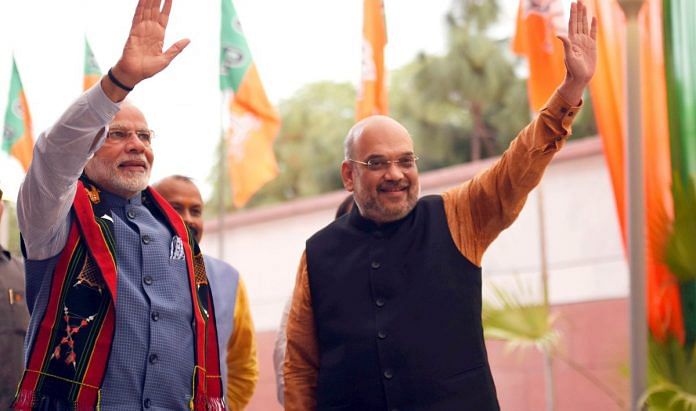The results come as a warning for the BJP, but to its credit, the party is quick to learn from its mistakes, and has the capacity to course-correct.
After forming a government in three northeastern states, it should have been a cake walk for the BJP to win the two Lok Sabha bypolls in UP. It was not.
The Gorakhpur Lok Sabha seat represented by the BJP, rather by Yogi Adityanath, has a history. His guru’s guru Mahant Digvijay Nath wrested this seat in 1967 as an independent candidate from Singhasan Singh of the Congress, who had held it since 1952. His successor Mahant Avaidyanath won in 1970. In 1989, even after the formation of the BJP in 1980, Avaidyanath won this seat as Hindu Mahasabha candidate.
It was only after the Ram Janmabhoomi movement and the famous Rath Yatra of Lal Krishna Advani that the seat came to the BJP. Avaidyanath’s successor Yogi Adityanath won this seat for the BJP in 1998, 1999, 2004, 2009 and 2014.
For once, victory and defeat both have very significant portents.
Conceding defeat, Adityanath made two important points. He candidly admitted that there was complacency in the party’s well-oiled electoral machine. A party that could wipe out the CPI(M) from Tripura lost to parties that were almost written off just a year and a half ago.
Another noteworthy observation was his admission that the BJP failed to grasp the significance of the SP-BSP deal halfway through the elections. This gross underestimation of the combined strength of his foes is a much bigger lesson to Adityanath, who will be singularly responsible for BJP-NDA-2 in 2019.
The SP’s victory has raised the hopes of non-Congress, non-BJP parties to form an umbrella coalition to take on the Modi magic in 2019. This is mainly due to the failure of the Congress to stand up to the challenge. Even in the recent by-election, the Congress candidate forfeited his deposit as the number of votes polled by him was not even the margin between the winner and the runner-up.
A decent strategy for the Congress would have been to withdraw from the fray and take credit for facilitating the BJP’s defeat. The Congress has therefore lost its bargaining chip in UP when the SP-BSP combine will contest majority of the seats. SP’s experience with the Congress in the UP assembly election was bad anyway.
But the statements of some BSP leaders that this alliance was limited only to the bypoll is actually based on simple caste and vote-bank arithmetic and the BSP’s capacity to transfer a large chunk of its votes — 19.7 per cent in 2014 and 22.23 per cent in 2017, which largely excludes the entire non-Dalit vote share, which Mayawati was able to get in 2009. There is no reason why she would bury the hatchet with the SP. While Akhilesh seems to have gained some elbow space, his detractors in the party will demand their own pound of flesh for aligning with the BSP and sharing SP’s vote bank with a bitter political rival.
In any case, the caste factor did not work against the mandir issue and “Congress ka haath, aam aadmi ke saath”. But both these issues are now already “encashed” (to borrow the words of a BJP leader), and hence unworkable. All the parties will therefore have to work out caste-based plan, but present a development agenda, a strategy where the BJP is far ahead of others.
Besides the over-confidence of the BJP, the success of the 2004 Lok Sabha experiment can be traced to the untiring efforts of the Left to stitch a coalition under the leadership of the Congress. But the Left game plan of coalition has been rejected by the apex leadership (Tripura is the result), and no party in its right senses would want to share the political dais with the Congress, at least under its present (working and/or non-working) president.
The UP bypoll results have come as a warning for the BJP leadership, which, to its credit, is quick to learn from its mistakes and has the capacity to course-correct. The Modi-Amit Shah combine has already begun fine-tuning the state leadership, especially in Rajasthan, Chhattisgarh and Madhya Pradesh. The Congress in Karnataka is in no shape to beat anti-incumbency and retain the state.
The SP’s victory, piggybacking on the BSP, will enthuse and stimulate the third front chimera, and may even dent the BJP in some areas because a combined opposition cannot be dismissed as impossible. But a battle-ready BJP is too strong a force to be challenged by highly fragmented, cadre-less, leader-less political forces with limited appeal.
It would be naïve to believe that the BJP can be easily dislodged in 2019 if the UP model is followed. One swallow does not make a summer.
The author is a security and strategic affairs commentator and former editor of Organiser.







BJP Not Know correction thats Why BJP Not win in 2019